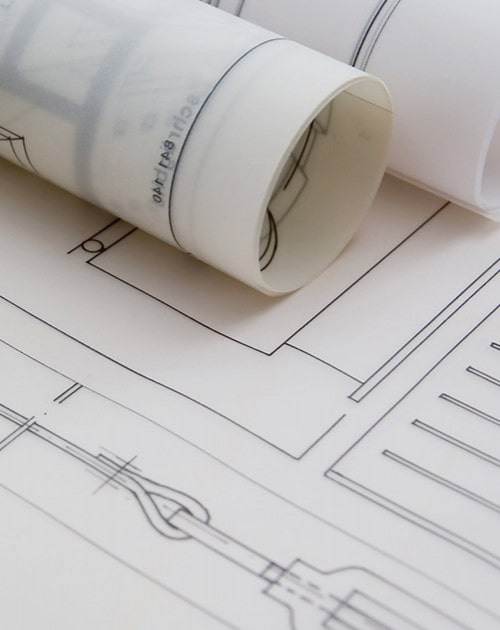Examining how defense and military engineering approaches can inspire smarter, more resilient builds.
The construction industry often focuses on efficiency, cost reduction, and sustainability, but it can take valuable lessons from military engineering, which prioritizes resilience, adaptability, and rapid deployment. Military engineers must build strong, long-lasting structures in extreme conditions while maintaining speed and efficiency—a skill set that applies directly to disaster-resistant buildings, remote construction, and secure infrastructure.
For developers, homeowners, and general contractors in Redmond and the Eastside, adopting military-grade building strategies can lead to stronger, safer, and more adaptable structures suited for both urban and off-grid environments.

Key Lessons from Military Engineering for Civilian Construction
1. Building for Extreme Conditions & Disaster Resilience
Military engineers must construct bunkers, bases, and fortifications that withstand natural disasters, attacks, and harsh climates. The civilian construction industry can apply these principles to:
✅ Hurricane-resistant homes – Reinforced concrete, impact-resistant glass, and aerodynamic designs minimize storm damage.
✅ Earthquake-proof buildings – Base isolation technology and flexible structures reduce seismic impact.
✅ Fire-resistant materials – Steel framing, fireproof insulation, and self-healing concrete improve fire safety.
🔹 Example: Some modern general contractors in Redmond now use fiber-reinforced concrete and high-performance steel for disaster-proof homes and offices.
2. Rapid Deployment Construction for Emergency & Temporary Structures
The military excels at quickly assembling bases, hospitals, and emergency shelters in disaster zones. This knowledge is useful for:
✅ Disaster relief housing – Prefabricated, modular shelters that can be deployed within hours.
✅ Pop-up medical units – Portable hospitals and quarantine facilities during health crises.
✅ Temporary offices & housing – Military-style container homes and office pods can be used for construction sites and remote workspaces.
🔹 Example: After hurricanes and wildfires, modular emergency housing modeled after military barracks is deployed to shelter displaced families.
3. Fortified and Secure Structures for Civilian Use
Military structures are designed for maximum security, using reinforced materials and smart design principles. Civilian applications include:
✅ Bullet-resistant homes and offices – Concrete-reinforced walls and laminated glass provide added protection.
✅ Underground bunkers and safe rooms – Designed to withstand storms, wildfires, and intrusions.
✅ Security-enhanced commercial buildings – Perimeter barriers, impact-resistant doors, and smart surveillance improve protection.
🔹 Example: In high-risk areas, some commercial buildings incorporate military-grade blast-resistant materials to protect against accidents and attacks.
4. Prefabrication & Modular Construction for Efficiency
Military engineers often rely on prefabrication to construct bases and command centers quickly. Civilian builders can use the same method to:
✅ Reduce construction time by 30-50%
✅ Improve quality control with factory-built components
✅ Lower costs through material efficiency
🔹 Example: Many home improvements in Redmond now use pre-built walls, flooring, and roofing panels, reducing construction waste and project timelines.
5. Sustainable, Off-Grid Infrastructure for Self-Sufficiency
Military bases operate in remote areas without traditional power, water, or internet, using:
✅ Solar microgrids – Power bases without reliance on central electricity.
✅ Water purification systems – Convert river or rainwater into drinkable water.
✅ Satellite & mesh networks – Provide internet access where no infrastructure exists.
🔹 Example: Eco-friendly off-grid cabins and rural homes use solar power, rainwater collection, and Starlink internet, mimicking military base self-sufficiency.
6. Advanced Materials & Smart Construction Technology
The military uses high-tech materials to create lightweight yet highly durable buildings. Civilian applications include:
✅ Self-healing concrete – Bacteria-infused concrete automatically repairs cracks, extending building lifespans.
✅ Aerogel insulation – A super-lightweight insulation material that’s more efficient than fiberglass.
✅ Adaptive camouflage coatings – Smart materials that adjust to temperature and reduce heat absorption.
🔹 Example: Some modern office buildings in Redmond use AI-controlled smart windows that adjust tint based on sunlight exposure, reducing energy costs.
7. Disaster Recovery & Rebuilding Strategies
Military engineers are experts in rebuilding after destruction—whether from war or natural disasters. Civilian applications include:
✅ Post-earthquake reconstruction – Using seismic-resistant materials and shock-absorbing foundations.
✅ Wildfire rebuilding techniques – Fire-resistant concrete and heat-reflective roofing.
✅ Flood-proof construction – Elevated foundations and waterproof building materials.
🔹 Example: Many fire-damaged homes in California are now rebuilt with concrete exteriors and fire-resistant siding modeled after military bunker designs.
How These Lessons Benefit Redmond & The Eastside
For developers, businesses, and homeowners in Redmond, applying military-grade construction strategies can:
✅ Improve durability – Structures last longer and resist extreme weather.
✅ Enhance safety – Military-inspired designs provide better security and disaster protection.
✅ Increase efficiency – Prefabrication and rapid deployment cut costs and save time.
✅ Enable off-grid living – Smart energy and water systems create self-sustaining buildings.
As climate change, natural disasters, and security concerns grow, military-inspired engineering can help future-proof homes, offices, and infrastructure projects.
Final Thoughts: Building the Future with Military Precision
Military engineering isn’t just about defense—it’s about efficiency, durability, and adaptability. By integrating military construction techniques, civilian builders can create stronger, smarter, and more resilient structures that withstand disasters, reduce costs, and enhance security.
For those in Redmond, Bellevue, and beyond, working with a general contractor experienced in military-grade materials and construction techniques ensures homes and commercial buildings meet the highest standards of safety and efficiency.

